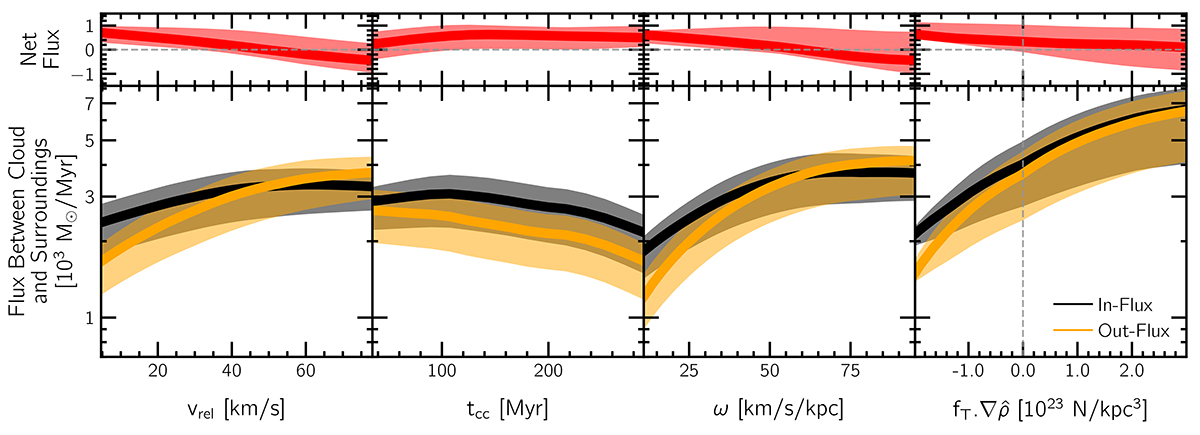Fig. 13.

Download original image
Main panels: In-flux (black) and out-flux (orange) rates as a function of velocity contrast between the cloud and the interface (vrel; left), cloud crushing time (tcc; center left), vorticity in the interface (ω; center right), and the dot product between the magnetic tension vector and density gradient in the interface, i.e. the effective tension (fT, eff = fT ⋅ ![]() ; right). The top panel shows the difference between the two, i.e. the net mass flow rate. While clouds with relatively low values of vrel and ω experience a net in-flux of material, larger values of these properties trigger a net loss of cold gas from the cloud. The inverse trend holds for tcc, as higher values correspond to larger shear times, thereby leading to a lower fraction of mass loss from the cloud. The strength and topology of magnetic fields may further be important, as a net magnetic tension force acting against the density gradient, i.e. away from the cloud and into the background, results in a net flux of mass into the cloud, likely by inhibiting the mixing of the background into the cloud.
; right). The top panel shows the difference between the two, i.e. the net mass flow rate. While clouds with relatively low values of vrel and ω experience a net in-flux of material, larger values of these properties trigger a net loss of cold gas from the cloud. The inverse trend holds for tcc, as higher values correspond to larger shear times, thereby leading to a lower fraction of mass loss from the cloud. The strength and topology of magnetic fields may further be important, as a net magnetic tension force acting against the density gradient, i.e. away from the cloud and into the background, results in a net flux of mass into the cloud, likely by inhibiting the mixing of the background into the cloud.
Current usage metrics show cumulative count of Article Views (full-text article views including HTML views, PDF and ePub downloads, according to the available data) and Abstracts Views on Vision4Press platform.
Data correspond to usage on the plateform after 2015. The current usage metrics is available 48-96 hours after online publication and is updated daily on week days.
Initial download of the metrics may take a while.


